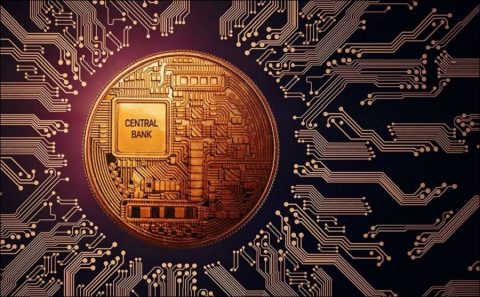The future will definitely be digital currencies. There is no doubt about it, but the system is not yet settled. Entering this field with dreams of getting rich quick and without understanding the risks involves enormous risks for amateurs.
In recent years, in the intense digitalization experienced in many countries of the world, there is an increasing trend towards digital currencies, as well as a Bitcoin frenzy. Bitcoin is just one of the cryptocurrencies available in the market, but it is the most popular and best known crypto money because it is the first crypto money.
Cryptocurrencies and, by the way, Bitcoin can be defined as digital currencies built on the logic of blockchain. Therefore, to understand cryptocurrency, it is necessary to understand digital money and blockchain. I see that these concepts are not sufficiently settled in the minds of many people yet and are often confused. I also see that the citizen on the street is increasingly buying and selling cryptocurrencies, just like he used to do foreign exchange (forex) trading, and I see heavy advertisements about it. I want to start with digital money, then move on to blockchain and end with cryptocurrencies. It is useful to understand these concepts well and to know the risks taken if there are those who invest in cryptocurrencies.
Digital currency
Digital money is the name given to money that does not have a physical existence in paper or metal and can be transferred on a computer and between accounts. For this reason, it is also called electronic money. Therefore, digital money is not a money that can be touched, but a money that can be registered, transferred and used to pay for goods and services.
In order for a currency to be defined as digital money, it must only exist digitally. In this sense, all cryptocurrencies are also digital money, but as we will see below, they have different additional features. DigiCash, which emerged in the early 1990s, is known as the first digital currency, but this money did not last long. The most widely used examples of what we can call digital money at the moment are cryptocurrencies such as Bitcoin, Ethereum, Litecoin and Ripple.
In fact, we are moving towards an increasingly digital payment system as we increasingly make payments online or by credit card, and cash usage is declining rapidly. However, for example, it is not possible to define the Euro or the US Dollar as digital money in its current form, because they have a physical (paper and coin) equivalent and we are increasingly using the digitalized version just for convenience.
However, it should come as no surprise that central banks issue digital money as a new currency in the very near future, as the use of cash is declining. There is already talk of digital currencies such as the digital Euro or digital Yuan. In this case, the central banks of these countries will be behind these coins, and the European Central Bank will be behind the digital Euro.
Blockchain
Blockchain is essentially a database, that is, a record keeping system. However, the feature of this system is that the records are kept in many independent places and interconnected, instead of being kept under the control of a single institution and in a single center. As a classic example, let’s consider a bank’s database. In this database, the information of the people and companies that are the customers of the bank, the details of their accounts, the bank’s price and rate data and many other data and information are kept.
Therefore, it is under the full supervision and responsibility of the relevant bank. It is not possible for anyone else to access this database. Millions of customers, thousands of employees and hundreds of branches are connected to the same data center, and millions of transactions are carried out simultaneously through this database. In order to enable this, an investment is made to provide the necessary capacity and transaction speed. Since security is also very important, hardware and software infrastructure that provides security must also be established. In addition, a backup data center is often set up to store this data simultaneously in another location for all kinds of dangers (fire, earthquake, sabotage, etc.).
In blockchain, the situation is very different. There is no central database here. As the name suggests, information is created in blocks and related blocks are linked together by a chain, forming a decentralized database. The diagram below shows the stages of a money sending transaction within the logic of the blockchain.
While in a classical database (for example, a bank) a remittance transaction can only be seen in the bank’s records as approved by it, in the blockchain all parties involved in this money transfer see the transaction, approve it and then the transaction takes place. What distinguishes the blockchain from the classical database is that transactions are carried out in a decentralized manner with the participation and approval of the relevant parties, without being subject to the supervision and approval of a certain institution.
Cryptocurrency
Cryptocurrency is a digital currency built on a blockchain database. In this sense, it is no different from other digital currencies. However, there is no official or private authority behind cryptocurrencies that gives it assurance and support. These are decentralized currencies built on the blockchain logic I explained above.
For example, Bitcoin is a blockchain-based digital currency system that validates transactions as of January 2021 and operates on around 12,000 computers called nodes and miners. Since Bitcoin, which was released as the first crypto money in January 2009, attracted serious attention and its price increased significantly, many crypto currencies have appeared on the market in recent years. As of February 2021, there are 6700 cryptocurrencies on the market and their total market value is estimated at $1.6 trillion.
Among them, the most well-known ones besides Bitcoin are cryptocurrencies such as Ethereum, Tether, Binance Coin, Cardano, Polkadot and Litecoin. In order for cryptocurrencies to be used in the purchase of goods and services, the company offering the goods or services must recognize this crypto money. For example, Tesla announced that it would accept Bitcoin in car sales, and this decision also led to an increase in the price of Bitcoin. However, despite such examples, the use of cryptocurrencies in the purchase of goods and services is extremely limited as of today. It is not easy to predict how much this scope will expand in the future.
Today, cryptocurrencies are in demand for investment purposes rather than as a means of exchange for buying and selling. It is also claimed that cryptocurrencies are used in payments related to legal and unregistered transactions, since these coins and the payments made with them are not easy to follow by the official authorities.
The incredible rises in the price of Bitcoin have led to the launch of many cryptocurrencies, as I mentioned above, intermediary companies dealing with the purchase and sale of these have been established, and even with the popularity of these purchases, even a stock market where only cryptocurrencies are traded has emerged. In order to make money from this business, many organizations in the sector make intense and misleading advertisements that give the impression that everyone is constantly making money.
It is seen that investors, following these developments, and especially seeing the increases in the price of Bitcoin, are increasingly starting to trade and invest in cryptocurrencies for speculative purposes.
At this point, it is useful to underline some points regarding crypto money investments and trading, which are also very popular in Turkey. Those who invest in cryptocurrencies need to know that there is no assurance authority behind them and that their prices are determined entirely by supply and demand based on the values attributed by investors. In addition, a common phenomenon is attempts to manipulate prices with some fictitious news and comments in the media.
Therefore, these coins are highly speculative and risky instruments. Its price can increase from 10 dollars to 1000 dollars in 1 day, and it can go down to 5 dollars the next day. Investors, especially those who find stocks risky, need to know that cryptocurrencies carry risks far beyond this. There is no guarantee that the crypto money you have invested will not disappear tomorrow and that the book value in your hand may not make any sense, because there is no authority behind them that guarantees their continuity and use.
In addition, since these currencies are still very new financial instruments, the regulations on this issue in many countries are quite inadequate. Some scammers can take advantage of the interest in cryptocurrencies and defraud people who do not know enough by making fake transactions on fake sites.
It is very likely that the vast majority of those who invest in cryptocurrencies without knowing these coins and their workings and with all their savings, in the hope of making money in the short term, will be disappointed. Therefore, I strongly recommend that market professionals and those who will invest a small portion of their savings in these currencies stay away from cryptocurrencies.
Visits: 129






